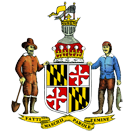A BRIEF SUMMARY OF THE DESVARREUX PAPERS
Prepared by Mrs. Patricia Ranum
The La Toison des Varreux family was apparently a noble family which had lost much of its resources during the French Revolution. A branch, probably a younger branch, of this family had at some point in the eighteenth century emigrated to Port au Prince region of San Domingo. Indeed, the "hero" of these papers is never called "le comte des Varreux," leading us to believe that the island branch of the family is one which had gone to seek its fortune in the islands, since the elder branch had inherited the family estates in France.
In any event, François La Toison des Varreux married Catherine Penin de L'Epine and by 1760 was residing along the Cul-de-Sac river outside Port au Prince. In 1760 their "last" son, François Silver des Varreux was baptised, probably quite soon after his birth, which seems to have cost his mother her life.(A2)
It is not certain that any other children of this marriage reached adulthood, for none of these papers, so far as I have read (unless the business correspondence reveals a name) has referred to any brothers or sisters. Indeed, François Silver inherits, after a law suit, his grandfather's estate on his Cul-de-Sac.(A3); it is a question of cousins rather than of siblings trying to rob him of his rights. This robbery had been made easier, it seems, by the fact that during the 1780s — in other words during the last years of the Old Regine — François Silver had gone to France, probably to pursue his studies. (There was apparently a great deal of interchange between France and the islands depsite the rigors of travel, and island families remained in contact with their continental relations.) François Silver, in his mid-twenties, returned to San Domingo about 1786, discovered that his grandfather's will (made when he was but a child) had been disregarded, and won the lawsuit. His holdings were considerable, for he had also been heir of a certain d'Andirau in 1790, and his own wife was the daughter of Cuvilly, owner of a plantation bordering on that of the Desvarreux. (A16, A17, A4).
François Silver La Toison des Varreux marriend Marie Cuvilly and had five children: James, Elizabeth (Mrs. Webb), Marie [Catherine?], perhaps called "Carennie," Rosa, and Gustav. By 1825, when these children put in their claim for indemnification for family losses at Port au Prince, they were all considered "major." They must have been born in the early years of the nineteenth century at the latest and were but small children (or not even born) when the family was forced to flee. A detailed report of this escape is found in A18, while a pass (A14) shows that the family first passed via Cuba before taking a ship for Baltimore.
The Desvarreux (for since the Revolution the family had dropped the aristocratic spelling of the name, and indeed began to call themselves Desvarreux, while the actual family name was La Toison) seemed to remain in a circle of former colonials, expatriates like themselves, once in Baltimore. There is no indication of how old François Silver managed to provide for his family upon their arrival in 1804. Nor is there an indication of the profession or trade of James L. Desvarreux, his son. But times were hard and money scarce.
When the French government under the restored monarchy voted to indemnify those colonials who had been expelled, the Desvarreux family, circa 1825, was put in touch with the firm of Dumoustier & Goujaud of Paris (later changing its name to Desbrosses). The correspondence in B is the chronicle of the efforts of the two Desvarreux to regain some of the family fortune. Therefore, for the next FIFTY YEARS these men worked to satisfy the exigencies of the bureaucracy in Paris. They were forced to find copies of notarial archives to prove their very existence. Since all family papers had been burned in the uprising, Desvarreux obviously had to dredge up such things as receipts for sugar sold, business accounts (A10) (A7), a map of a portion of his plantation (A13) all in an attempt to prove that they had indeed been prosperous landowners, that the estate had brought in as much as they claimed it had, etc. Though the business letters are too polite to show how much frustrating work the Desvarreux must have put into their side of the correspondence, there must have been enormous time spent cutting through the red tape of getting official copies of birth records, law suits, etc. James L. Desvarreux surely worked long and hard!
I cannot say how much of the original value of the estate was regained over those fifty years. The facts are, however, all there for the computing, I would suspect.
I cannot explain where Mr. Loiseau fits in, but he is a very interesting old codger! |
